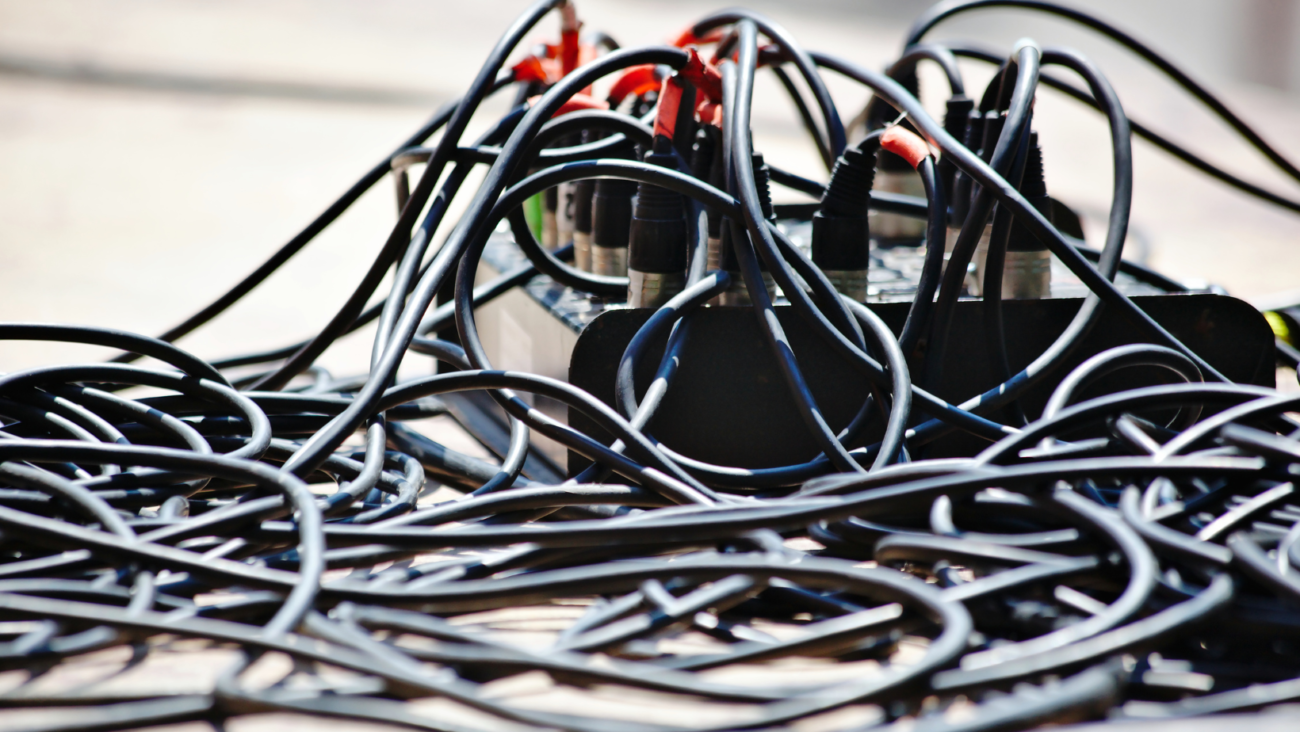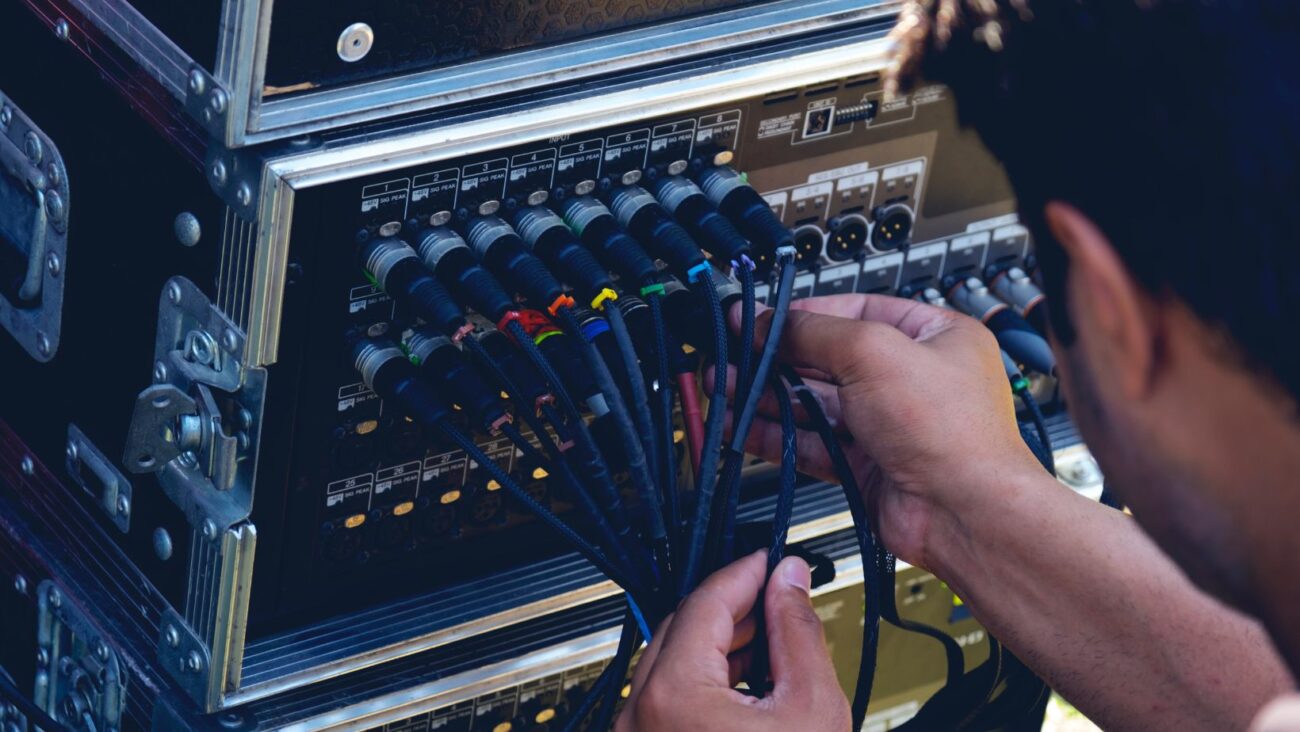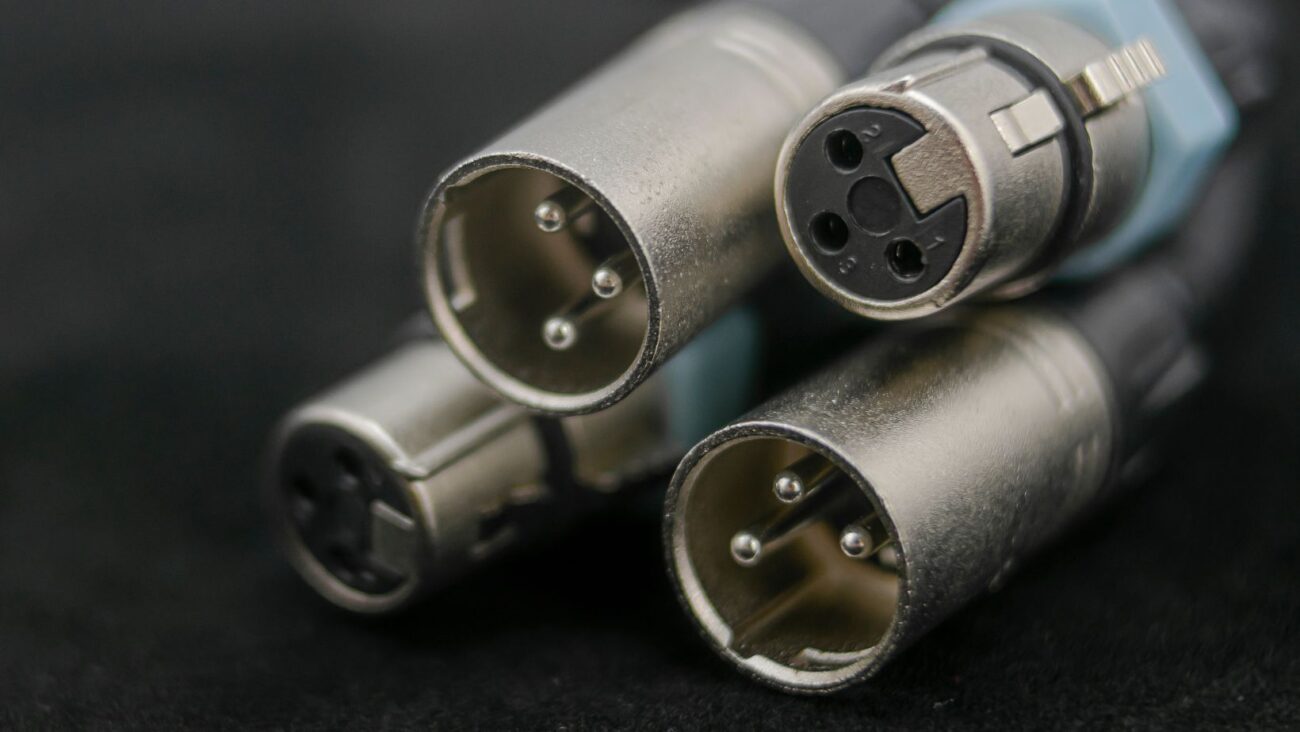Audio Cables Guide: Most Used Connectors for Your Music Needs
In audio equipment, having the right cables is essential for optimal performance. Understanding the various types of connectors available can greatly enhance your music-listening experience. This comprehensive guide will explore audio cables’ purpose, functionality, and the differences between digital and analog signals. We will also discuss the distinction between balanced and unbalanced cables, the different cable types commonly used in the industry, and whether investing in high-quality cables is worth it. Let’s embark on this audio journey and discover the world of connectors!
What Are Audio Cables? How Do They Work?
Audio cables are the physical medium that transfers electrical signals between audio devices. They are typically composed of conductive materials, most commonly copper, surrounded by insulating materials to prevent signal interference. Cables transmit electrical signals that are converted into audible sounds by audio equipment such as speakers or headphones. The conductive materials within the cables allow the electrical current to flow from one device to another, ensuring the delivery of the audio signal.
The quality and design of cables play a crucial role in the audio transmission process. Higher-quality cables often feature better shielding and insulation, reducing the likelihood of interference and signal degradation. Connectors at the ends of the cables, such as XLR, RCA, or 3.5mm jacks, facilitate the secure connection between audio devices.
Digital vs. Analog Signals: Audio signals can be classified as digital or analog, each with its characteristics and applications. Analog signals are continuous electrical waveforms that represent sound. They have been traditionally used in audio equipment and provide a warm and natural sound quality. Analog signals can vary infinitely in voltage and frequency, offering a smooth representation of sound. However, they are more susceptible to interference and signal degradation over long distances.
On the other hand, digital signals are represented by a series of binary numbers that encode audio data in a digital format. Digital signals offer precise and accurate sound reproduction, as the audio information is converted into discrete numerical values. These values can be manipulated, processed, and transmitted without significant loss in quality. Digital signals are less susceptible to noise and interference, resulting in cleaner audio transmission. They have become increasingly prevalent with the rise of digital audio technologies and are commonly used in modern audio devices such as CDs, MP3 players, and streaming services.
The conversion between analog and digital signals occurs through analog-to-digital (ADC) and digital-to-analog (DAC) converters. ADCs transform analog audio signals into digital data, while DACs convert digital data back into analog signals for output through speakers or headphones. Using digital signals provides advantages such as high fidelity, accurate reproduction, and the ability to apply digital processing effects to the audio signal.
Balanced vs. Unbalanced Cables
Audio cables can be balanced or unbalanced, depending on their design and wiring configuration. The distinction lies in how they handle noise and interference during audio transmission.
Balanced cables are commonly used in professional audio setups and offer superior noise-rejection capabilities. They are designed to minimize the impact of external interference, making them ideal for long cable runs where the audio signal may be exposed to environmental noise. Balanced cables achieve this by utilizing a technique called differential signaling. They typically consist of three conductors: two carry the audio signal in opposite phases (positive and negative), while the third serves as the ground connection. The two audio signal conductors carry the same audio information but with reversed polarity. By comparing the voltage difference between these conductors, the receiving device can cancel out any external noise or interference that affects both conductors equally, resulting in a cleaner audio signal.
On the other hand, unbalanced cables are simpler in design and typically consist of two conductors: one for the audio signal and one for the ground connection. These cables are commonly found in consumer-level audio setups and shorter cable runs. Unbalanced cables are susceptible to noise and interference, particularly over longer distances. The lack of a separate conductor for the audio signal and ground makes them more prone to picking up electromagnetic interference (EMI) and radio frequency interference (RFI).
It is important to ensure compatibility between balanced and unbalanced connections when connecting audio devices. Some devices may feature balanced and unbalanced inputs and outputs, allowing for flexibility in the choice of cables.
Balanced connections are commonly used in professional audio environments, such as recording studios, concert venues, and live sound setups. They offer improved signal integrity and noise rejection, resulting in cleaner audio transmission. Unbalanced connections, however, are still prevalent in many consumer audio devices, including home theater systems, personal audio players, and portable speakers. Understanding your audio setup’s requirements and equipment’s capabilities will help determine the appropriate cable type to use.
Different Audio Cable Types
Analog Connectors
XLR Connectors: XLR connectors are widely used in professional audio setups, particularly in recording studios, live performances, and sound reinforcement systems. They are known for their durability, reliability, and ability to carry audio signals over long distances without significant signal degradation. XLR connectors typically have three pins: one for the ground connection (shield) and two for the audio signal, often called positive and negative pins. The balanced design of XLR cables and robust construction make them an industry standard for professional audio applications.
TRS Connectors: TRS connectors, also known as Tip-Ring-Sleeve or 1/4″ connectors, are versatile and can be used for balanced and unbalanced audio connections. They are commonly found on headphones, musical instruments, audio interfaces, and professional audio equipment. TRS cables have three conductors:
- The tip carries the left audio channel.
- The ring carries the right audio channel.
- The sleeve serves as the ground connection.
TRS connectors are widely used in audio equipment due to their compatibility and availability.
RCA Connectors: RCA connectors, also known as phono connectors, are commonly used in consumer audio setups. They are unbalanced connectors and are typically used for shorter cable runs. RCA cables are usually color-coded, with red connectors representing the right audio channel and white connectors representing the left audio channel for stereo signals. The center pin carries the audio signal, while the outer shield is the ground connection. RCA connectors are widely used in home theater systems, DJ mixers, and other audio devices.
3.5mm Connectors: 3.5mm connectors, also known as mini or headphone jacks, are widely used in consumer electronics. They are unbalanced connectors commonly found on smartphones, laptops, portable music players, and various audio devices. 3.5mm cables are typically used for transmitting stereo audio signals. They have three conductors:
- The tip carries the left audio channel.
- The ring carries the right audio channel.
- The sleeve serves as the ground connection.
3.5mm connectors are convenient for connecting headphones, portable speakers, and auxiliary inputs on audio equipment.
Digital Connectors: Optical (Toslink) Connectors: Optical connectors, also known as Toslink connectors, are commonly used for digital audio transmission. They use fiber optic cables to transmit audio signals through light pulses. Optical connections provide excellent signal quality, immune to electromagnetic interference. They are commonly found on home theater systems, soundbars, and audio interfaces. Optical cables transmit audio in various formats, including stereo and multi-channel surround sound.
Coaxial Digital Connectors: Coaxial connectors, also known as SPDIF or RCA connectors, are another type of digital audio connector. They use coaxial cables to transmit audio signals through electrical impulses. Coaxial connections are commonly used for connecting audio devices to receivers, digital-to-analog converters (DACs), and other audio equipment. Coaxial cables can transmit stereo and multi-channel audio signals, providing a reliable and convenient solution for digital audio transmission.
Spending Money on Cables – How Much Does Quality Matter?
One common question when discussing audio cables is whether investing in high-quality cables is worth it. The answer depends on various factors, including the audio equipment being used, the cable run length, and the audio setup’s specific requirements.
Higher-quality audio cables are often constructed with better materials and superior craftsmanship, resulting in improved signal integrity and reduced noise and interference. They may feature enhanced shielding, thicker conductors, and superior connectors. These factors can contribute to a cleaner audio signal and a more enjoyable listening experience, particularly in professional audio environments or situations where long cable runs are necessary.
However, in consumer-level setups and shorter cable runs, the difference in sound quality between budget and high-end cables may be minimal or even invisible. Factors such as the quality of the audio source, the speakers or headphones being used, and the environment in which the audio is being listened to can also significantly impact the overall sound quality.
It is important to consider your specific needs, budget, and expectations when deciding on the appropriate cables for your audio setup. Investing in high-quality audio cables may be a worthwhile endeavor if you are a professional audio engineer, musician, or audiophile who values the utmost audio fidelity. However, for casual listeners or those on a tight budget, choosing well-made cables that meet your specific requirements may provide a satisfactory listening experience without breaking the bank.
Understanding the different types of audio cables and connectors is essential for achieving optimal audio performance. You can make informed decisions when setting up your audio equipment by grasping the differences between digital and analog signals, balanced and unbalanced cables, and various connector types such as XLR, TRS, RCA, 3.5mm, optical, and coaxial. While investing in high-quality cables can offer advantages in certain scenarios, it’s crucial to consider your specific needs and budget. Selecting the right cables will create a more enjoyable and immersive music-listening experience.









